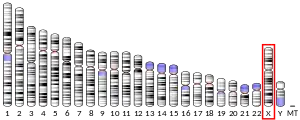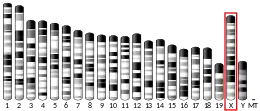| DOCK11 | |||||||||||||||||||||||||||||||||||||||||||||||||||
|---|---|---|---|---|---|---|---|---|---|---|---|---|---|---|---|---|---|---|---|---|---|---|---|---|---|---|---|---|---|---|---|---|---|---|---|---|---|---|---|---|---|---|---|---|---|---|---|---|---|---|---|
| Identifiers | |||||||||||||||||||||||||||||||||||||||||||||||||||
| Aliases | DOCK11, ACG, ZIZ2, bB128O4.1, Dock11, dedicator of cytokinesis 11 | ||||||||||||||||||||||||||||||||||||||||||||||||||
| External IDs | OMIM: 300681 MGI: 1923224 HomoloGene: 70950 GeneCards: DOCK11 | ||||||||||||||||||||||||||||||||||||||||||||||||||
| |||||||||||||||||||||||||||||||||||||||||||||||||||
| |||||||||||||||||||||||||||||||||||||||||||||||||||
| |||||||||||||||||||||||||||||||||||||||||||||||||||
| |||||||||||||||||||||||||||||||||||||||||||||||||||
| |||||||||||||||||||||||||||||||||||||||||||||||||||
| Wikidata | |||||||||||||||||||||||||||||||||||||||||||||||||||
| |||||||||||||||||||||||||||||||||||||||||||||||||||
Dedicator of cytokinesis protein 11 (Dock11), also known as Zizimin2, is a large (~240 kDa) protein encoded in the human by the DOCK11 gene, involved in intracellular signalling networks.[5][6] It is a member of the DOCK-D subfamily of the DOCK family of guanine nucleotide exchange factors (GEFs) which function as activators of small G-proteins. Dock11 activates the small G protein Cdc42.
Discovery
Dock11 was identified as a protein which is highly expressed in germinal center B lymphocytes.[7] Subsequent RT-PCR analysis revealed expression of this protein in the spleen, thymus, bone marrow and in peripheral blood lymphocytes. Dock11 is expressed at lower levels in NIH-3T3 fibroblasts, C2C12 myoblasts and Neuro-2A neuroblastoma cells. Dock11 mRNA has also been detected in the pars intermedia.[8]
Structure and function
Dock11 exhibits the same domain arrangement as other members of the DOCK-D/Zizimin subfamily and shares the highest level of sequence identity with Dock9.[7] It contains a DHR2 domain which mediates GEF activity and a DHR1 domain which may interact with membrane phospholipids. It also contains an N-terminal PH domain which may be involved in its recruitment to the plasma membrane. Dock11 binds and activates nucleotide-free Cdc42 via its DHR2 domain[7] and has also been reported to mediate positive feedback on active, GTP-bound Cdc42,[9] although this interaction required a small N-terminal region of Dock11 in addition to the DHR2 domain. Cdc42 in turn regulates signaling pathways that control diverse cellular functions including morphology, migration, endocytosis and cell cycle progression.[10] Gene expression studies have suggested that Dock11 may have a role in the development of pituitary and testicular tumours.[8][11]
Deficiency in humans
Hemizygous DOCK11 mutations in humans are associated with early-onset and severe autoimmunity.[12] In eight male patients, from seven unrelated pedigress, with hemizygous DOCK11 missense variants, a reduction in DOCK11 expression was observed. The patients presented with early-onset autoimmunity, including cytopenia, systemic lupus erythematosus, skin, and digestive manifestations. Platelets and lymphocytes exhibited abnormal ultrastructural morphology and spreading as well as impaired CDC42 activity. The patients' cells exhibited aberrant protrusions and abnormal migration speed in confined channels concomitant with altered actin polymerization during migration. A DOCK11 knock-down in monocytes-derived dendritic cells (MDDC) and in T cells from healthy controls, recapitulated these abnormal cellular phenotypes. Abnormal regulatory T cells (Tregs) phenotype with profoundly reduced FOXP3 and IKZF2 expression was also observed, consistent with the autoimmune features developped by the DOCK11-deficient patients. Moreover, the authors observed a reduced T cell proliferation and an impaired STAT5B phosphorylation upon IL2 stimulation of the patients' lymphocytes. DOCK11 deficiency is therefore a new X-linked immune-related actinopathy leading to abnormal actin cytoskeleton remodeling, impaired CDC42 activity and STAT5 activation, and associated with early-onset autoimmunity.[12]
References
- 1 2 3 GRCh38: Ensembl release 89: ENSG00000147251 - Ensembl, May 2017
- 1 2 3 GRCm38: Ensembl release 89: ENSMUSG00000031093 - Ensembl, May 2017
- ↑ "Human PubMed Reference:". National Center for Biotechnology Information, U.S. National Library of Medicine.
- ↑ "Mouse PubMed Reference:". National Center for Biotechnology Information, U.S. National Library of Medicine.
- ↑ "Entrez Gene: DOCK11 dedicator of cytokinesis 11".
- ↑ Côté JF, Vuori K (December 2002). "Identification of an evolutionarily conserved superfamily of DOCK180-related proteins with guanine nucleotide exchange activity". Journal of Cell Science. 115 (Pt 24): 4901–13. doi:10.1242/jcs.00219. PMID 12432077. S2CID 14669715.
- 1 2 3 Nishikimi A, Meller N, Uekawa N, Isobe K, Schwartz MA, Maruyama M (February 2005). "Zizimin2: a novel, DOCK180-related Cdc42 guanine nucleotide exchange factor expressed predominantly in lymphocytes". FEBS Letters. 579 (5): 1039–46. doi:10.1016/j.febslet.2005.01.006. PMID 15710388. S2CID 36721405.
- 1 2 Chien WM, Garrison K, Caufield E, Orthel J, Dill J, Fero ML (March 2007). "Differential gene expression of p27Kip1 and Rb knockout pituitary tumors associated with altered growth and angiogenesis". Cell Cycle. 6 (6): 750–7. doi:10.4161/cc.6.6.3986. PMC 2040307. PMID 17361101.
- ↑ Lin Q, Yang W, Baird D, Feng Q, Cerione RA (November 2006). "Identification of a DOCK180-related guanine nucleotide exchange factor that is capable of mediating a positive feedback activation of Cdc42". The Journal of Biological Chemistry. 281 (46): 35253–62. doi:10.1074/jbc.M606248200. PMID 16968698.
- ↑ Sinha S, Yang W (November 2008). "Cellular signaling for activation of Rho GTPase Cdc42". Cellular Signalling. 20 (11): 1927–34. doi:10.1016/j.cellsig.2008.05.002. PMID 18558478.
- ↑ Almstrup K, Leffers H, Lothe RA, Skakkebaek NE, Sonne SB, Nielsen JE, Rajpert-De Meyts E, Skotheim RI (August 2007). "Improved gene expression signature of testicular carcinoma in situ". International Journal of Andrology. 30 (4): 292–302, discussion 303. doi:10.1111/j.1365-2605.2007.00758.x. PMID 17488342.
- 1 2 Boussard C, Delage L, Gajardo T, Kauskot A, Batignes M, Goudin N, et al. (March 2023). "DOCK11 deficiency in patients with X-linked actinopathy and autoimmunity". Blood. 141 (22): 2713–2726. doi:10.1182/blood.2022018486. PMID 36952639. S2CID 257716324.
Further reading
- Côté JF, Vuori K (August 2007). "GEF what? Dock180 and related proteins help Rac to polarize cells in new ways". Trends in Cell Biology. 17 (8): 383–93. doi:10.1016/j.tcb.2007.05.001. PMC 2887429. PMID 17765544.
- Côté JF, Vuori K (2006). In vitro guanine nucleotide exchange activity of DHR-2/DOCKER/CZH2 domains. Methods in Enzymology. Vol. 406. pp. 41–57. doi:10.1016/S0076-6879(06)06004-6. ISBN 9780121828110. PMID 16472648.
- Meller N, Merlot S, Guda C (November 2005). "CZH proteins: a new family of Rho-GEFs". Journal of Cell Science. 118 (Pt 21): 4937–46. doi:10.1242/jcs.02671. PMID 16254241. S2CID 3075895.
- Yelo E, Bernardo MV, Gimeno L, Alcaraz-García MJ, Majado MJ, Parrado A (July 2008). "Dock10, a novel CZH protein selectively induced by interleukin-4 in human B lymphocytes". Molecular Immunology. 45 (12): 3411–8. doi:10.1016/j.molimm.2008.04.003. PMID 18499258.



